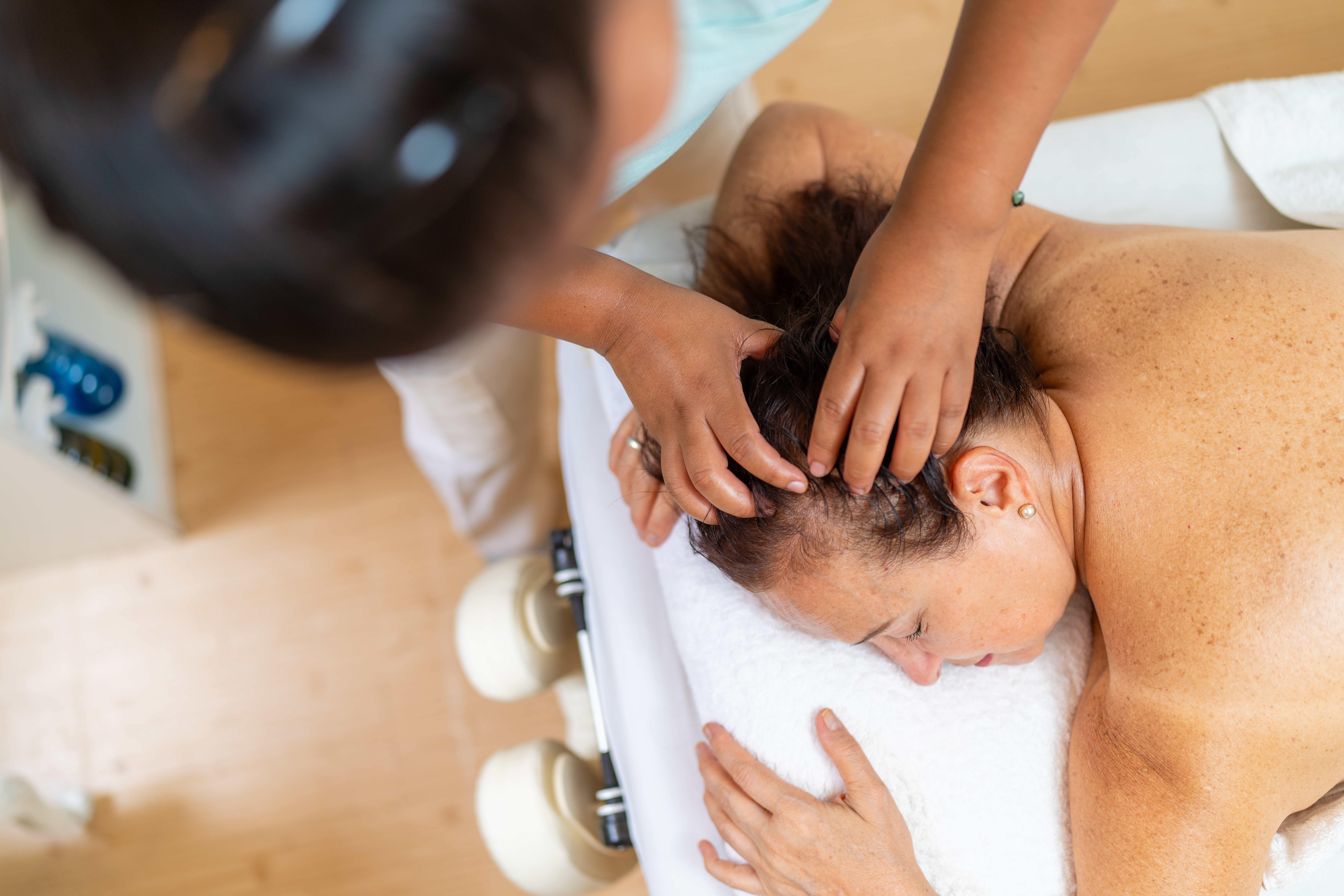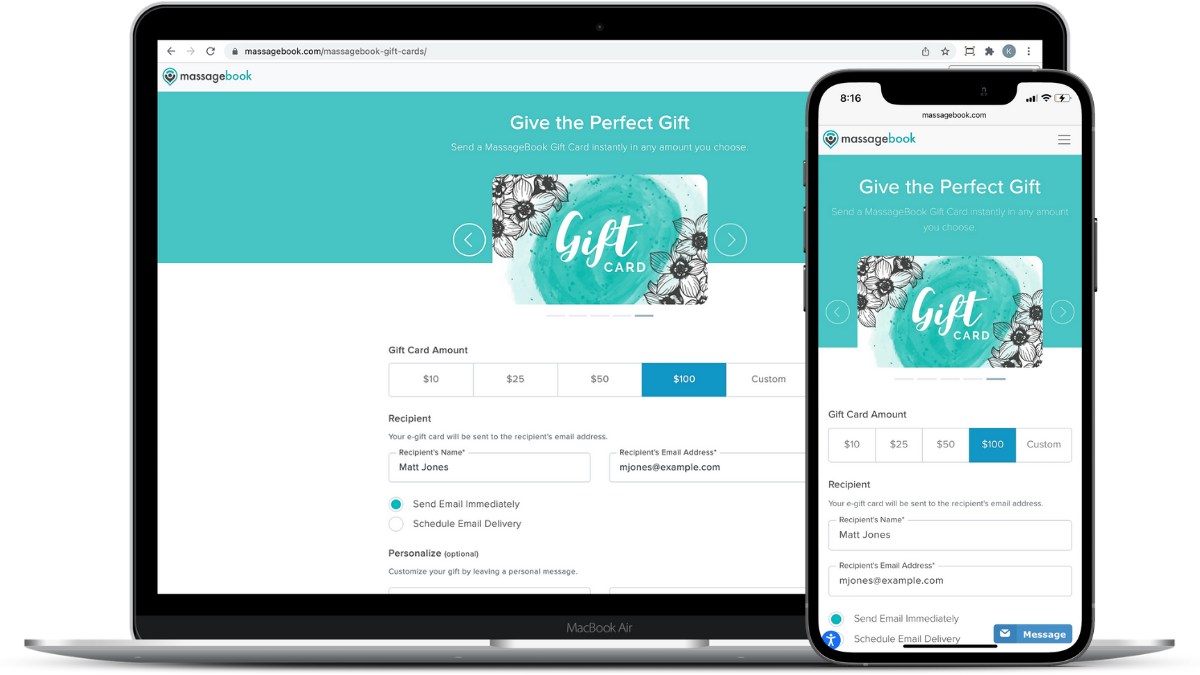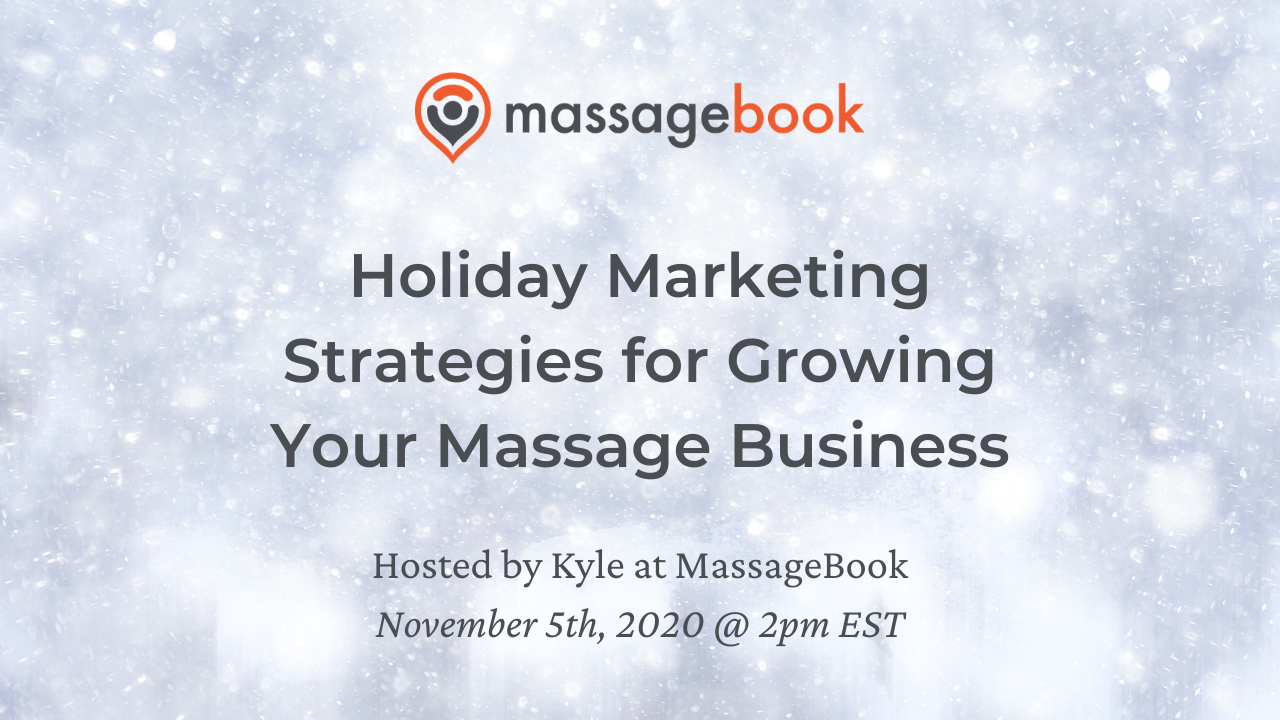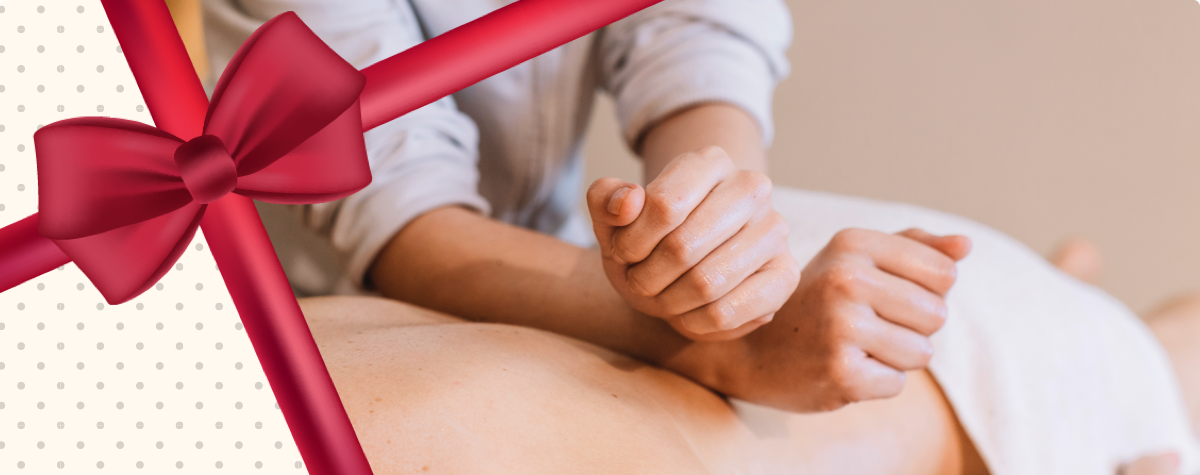Contents
Step 1: Deepen Your Understanding of Your Niche Audience

In our previous look at defining your niche we covered many surface-level identifiers. These key characteristics are crucial to getting started, but we’ll go a little deeper so you can create messaging that resonates with your audience. Again, we don’t want you to sound like everybody else.
Understanding your massage clients is a matter of paying close attention to their needs. You will develop this skill over time if you haven’t already. You’ll notice recurring patterns across your clients.
For example, do your clients typically ask for the same services? Do you find they come to you because they’re struggling with neck pain more than anything else? Do you only seem to be bringing in athletes who need help recovering from an injury?
These example questions are only for reference. The questions you must ask yourself will depend on your specialty (which problem you solve) and your target audience. As discussed in a previous module, you’ll also have to account for things like geographical location, demographics, and so on.
What you need to ask yourself is two questions:
- What are some patterns that you notice across your client base?
- How do you want to modify these patterns?
The reason behind these questions is we’re trying to figure out how your messaging is currently being received. Do people see you as the athletic injury recovery specialist or the therapist who helps overworked business professionals wind down?
If you can figure out who is showing up at your door and why, you can eventually start to adjust it so that you only bring in your ideal clients. For example, maybe you are attracting busy professionals but want to work with athletes.
The goal of this step is to notice these things that aren’t so quickly recognizable to someone on the outside.
Another key consideration as you examine your clients’ needs is that they don’t remain static over time. For example, as you help someone with chronic pain to find some relief after several months, they may feel they’re ready to move into a long-term maintenance routine. Or you may notice that a few of your clients have this idea in mind, and you start to offer it before they even ask.
As always, we encourage you to write down these patterns, requests, goals, etc. Note how they change over time and what seems to be driving your clients to return to you. There’s always more beneath the surface. Client surveys can certainly help you to get feedback to consider along the way.
This will help you determine how to position yourself as the best choice for your target audience.
Step 2: Position Yourself as the Go-To Expert
If you’re good at helping people in a certain way, don’t be afraid to say it! You are uniquely experienced in helping your target audience, and you need to clarify that.
You must become the go-to expert. You want your clients to say, I have a massage therapist who knows what they’re doing. You want them to gladly refer their friends to you when the topic of lower back tension pops up.
Be the expert.
The first part is acknowledging that you are the expert. The second part is telling people that you’re the expert. This is where people tend to have more trouble, but don’t worry, it’s simple.
You could just say in your messaging that you’re (for example) a “stress relief expert.” That’s a fine start, but you can do better.
Keep in mind with your messaging that you want to sound like you know what you’re talking about so that it resonates with your audience. So, rather than saying “stress relief expert,” you might elaborate further by saying, “I help busy professionals alleviate work-related tension and improve focus.” That’s a home run right there.
Think about how your audience thinks. Think about their needs and their pain points. You talk with them every day, so use the language they respond to, and don’t be afraid to get specific in your messaging. You don’t just help with “injury recovery for athletes.” No, you “help athletes get back on the field sooner through targeted recovery plans that prevent future injuries.”
If you really want to step up your game and appear as the expert that you are, start putting out content. You can use your knowledge alone to share blogs, and create social media posts, videos, classes, and more. Why not create content from the common threads you see across your clients? Feel free to sit down and write some ideas down about what you think would be informative and interesting to your audience (it’s not just about what’s interesting to you).
Where possible, leverage the power of client testimonials, especially ones that get specific about your expertise. A client that says you’re a good massage therapist is fine, but a testimonial that says you helped someone relieve unbearable neck tension after months of finding no solution—that’s powerful.
Step 3: Deploy Messaging That Reflects Your Positioning
With a more refined understanding of your niche audience and a bit of confidence, you can let the world know why you’re the best choice for their needs.
It’s time to load up the website, hop on social media, and adjust anything where you use written words. Every word is important, so make sure it’s earned its place. At the same time, don’t let it get you stuck. Do the best you can for now, and change it later if you have to.
You’ll want to prioritize the most visible and visited profiles. Depending on how you usually get more business, whether it’s your website, your social media pages, or that ad you took out, start where the traffic is.
Once you’ve updated the core profiles, you can start updating the other stuff, like your marketing materials, business cards, and even your letterhead. By the way, if you feel like your logo doesn’t quite represent what you do, feel free to change that, as well. Just remember to keep it professional.
The goal is to get your positioning out there, but also to create consistent messaging across all of your communications. No matter where your clients find you, they should know what you’re about, what you do, and whom you serve. They should be able to, at a glance, understand that you are uniquely qualified to help them get results.
As a reminder, be specific with your messaging. Don’t just say, “I offer massage therapy” when you could be saying, “I help desk workers relieve chronic neck pain caused by long hours at their desks.”
If you are familiar with marketing or really want to test what’s working and what isn’t, you could use A/B testing. This simply means that you try different headlines, calls to action, or phrasing in your ads, social media, or email campaigns in order to find what drives the most engagement. By fine-tuning your messaging and paying attention to what works, you can connect more effectively with your ideal clients.
One last note on positioning. Don’t let it hold you back. You don’t want to get stuck here, and you don’t need perfection. If you’re having trouble with this, adjust your positioning so that it’s 80% right. It doesn’t need to be 100%, and if you need to make tweaks later, it’s quite simple.
Just don’t get too caught up in the weeds here so that you’re spending days on this stuff. After all, you have a target audience to serve!
Step 4: Differentiate Through Specialized Offerings
We’ve talked a lot about messaging, but it isn’t the only way to differentiate yourself from other massage practices. One such way is to change the services you offer and how you offer them.
Take a moment and think about what your service offerings or packages say to your clients. Do your offerings fully align with your niche?
The names of your packages are just as important as what you offer, so don’t overlook this seemingly smaller point. Don’t offer a “massage therapy” package (boring and generic) when you could offer an “office worker wellness program.” Again, even here, you need to be specific. By doing so, you’re reinforcing that you’re the go-to expert.
So, let’s think about your offerings. If your niche is athletic recovery, your services might include personalized recovery plans, pre- and post-even massage packages, or long-term injury prevention programs.
Once you’ve got a few foundational packages together (and you’ve named them accordingly), you can explore ways to add depth and further customization options. Think about add-ons, upgrades, and other upsells that cater to your niche. If we revisit the athlete recovery package, maybe you can offer an upgrade that includes regular mobility assessments. Or, to the office worker package, you might add aromatherapy sessions or relaxation guides they can use at home.
Remember that you are the expert here, so don’t be afraid to charge accordingly. Since you know your niche and your audience, you’re offering a higher standard of service than the highly generalized practitioner. Plus, clients who appreciate your expertise will be more than happy to pay a premium to address their needs.
Step 5: Evolve with Your Clients and Industry
As we discussed earlier, your niche will change over time. Your clients will change over time. This is to be expected, but you will be required to exercise some flexibility. You’ll also probably have to change your messaging over time, so feel free to update this when it seems right.
You’ll see trends come and go, opportunities evolve, and clients redirect their needs throughout the years. Incorporate whatever you learn from your clients into your practice. If you notice clients are beginning to share the same concerns or feedback, adjust as necessary.
In addition to keeping an eye on what your clients have to say through feedback, surveys, and testimonials, you need to keep an eye on the industry as a whole. Keep on the lookout for emerging trends, new technology, and new opportunities to grow (and/or get certifications). We always encourage professional growth, so take advantage of the opportunities for development. It can only make you more qualified and more helpful to your clients.
Consider partnerships or collaborations that make sense for you. You might wait to pursue such connections until you’re more established, but you can consider teaming up with professionals in complementary fields.
For example, you could partner with yoga instructors, personal trainers, or nutritionists. You might set up joint offerings with these complimentary services, or a strong referral program that encourages clients to work with you and your partners. If you feel comfortable with seeing how you and a partnering service can collaborate, just reach out and see. Clients who take advantage of these deals will enjoy tremendous value and greater overall health.
Continuous Refinement for Lasting Success
Getting your positioning right isn’t a one-time task, so take comfort in that. Diving deeper into your clients’ needs will always help you understand how to serve them better.
If you can pay close attention to them and align your findings with your services, you can create amazing experiences for your clients that keep them coming back. Plus, in doing so, you are further establishing yourself as the go-to expert in your field.
Want more insights on building your massage practice through strategies and actionable tips, check out our eBook "How to start a massage business - 10 steps to success"





